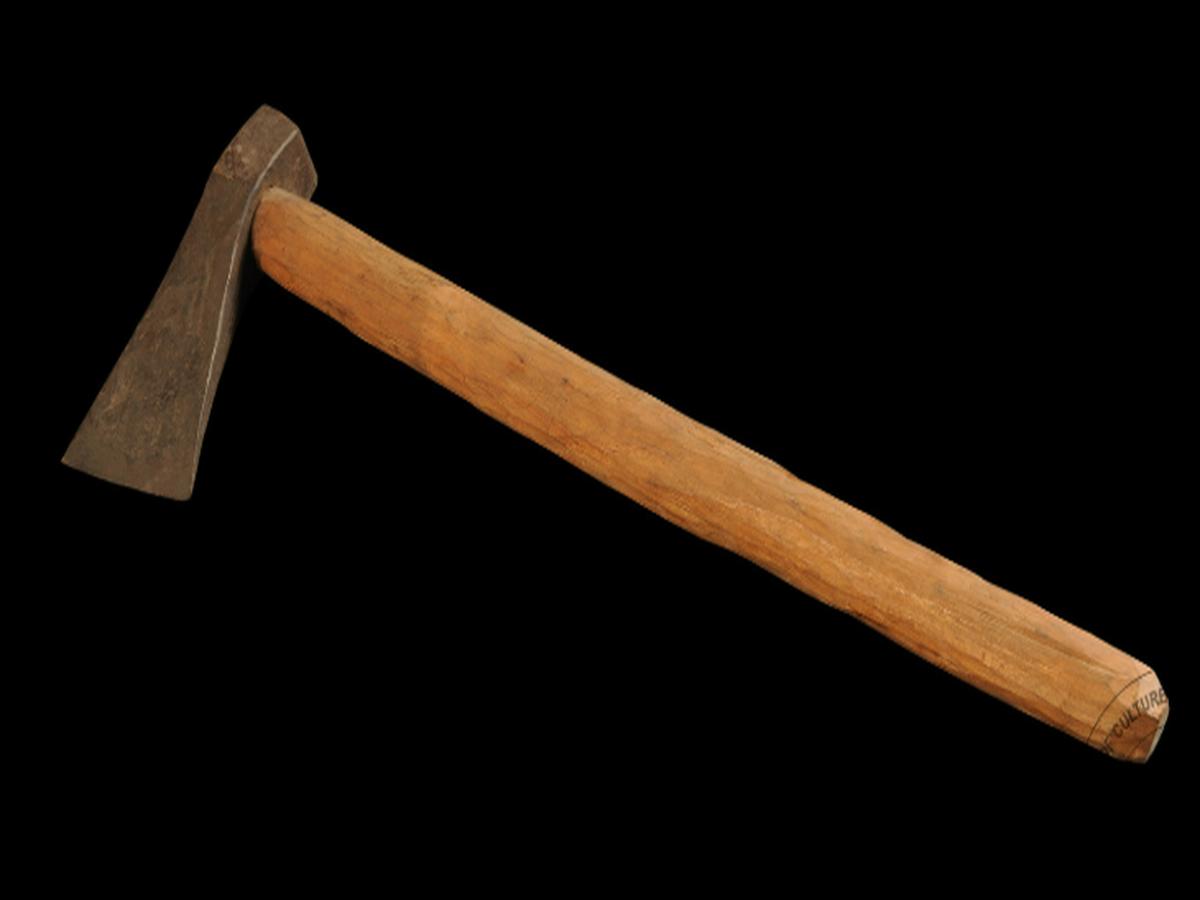State
Tribe Name
Art Type
short description
The Pasili is an axe that is traditional to and used among the Khond tribe of Odisha and Andhra Pradesh. These people are known for their close relationship with the environment, which enables them to convert their surrounding materials into useful tools for the sustenance of life and defense. The Pasili is one such tool that is actually a tool for working and symbolically an ax or instrument of strength.
Thumbnail

Filter Postion
Left
Filter Background
Off
Theme
Filter Header Image

content
Image

description
The Pasili is an axe that is traditional to and used among the Khond tribe of Odisha and Andhra Pradesh. These people are known for their close relationship with the environment, which enables them to convert their surrounding materials into useful tools for the sustenance of life and defense. The Pasili is one such tool that is actually a tool for working and symbolically an ax or instrument of strength.
The design and form of the Pasili reflect artistic acumen and indigenous skill and utility. The long solid wooden handle, being the most important part of the ax, acts as a steadying leverage and supply of gripping power in the application of the exclusive switching action. The handle fits into a circular socket of a rectangular iron blade with a cutting edge on the inside. The iron blade, forged by local tribal blacksmiths who zealously preserve their traditional craftsmanship, guarantees that this tool will be long-lived while having the cutting properties desired.
However, the Pasili is largely used for cutting and hewing wood, clearing brushy patches, and assisting in agricultural work; in primitive days, it served as an auxiliary weapon in tribal warfare or for defense against wild animals. Because of its multiuse character, it is indispensable for daily life among the Khond. In addition to that, the Pasili symbolically represents the culture of the tribe. It is commonplace to find this cutting tool at various traditional rituals and functions as a symbol of work, endurance, and the tribe's intimate relationship with nature.
The design and form of the Pasili reflect artistic acumen and indigenous skill and utility. The long solid wooden handle, being the most important part of the ax, acts as a steadying leverage and supply of gripping power in the application of the exclusive switching action. The handle fits into a circular socket of a rectangular iron blade with a cutting edge on the inside. The iron blade, forged by local tribal blacksmiths who zealously preserve their traditional craftsmanship, guarantees that this tool will be long-lived while having the cutting properties desired.
However, the Pasili is largely used for cutting and hewing wood, clearing brushy patches, and assisting in agricultural work; in primitive days, it served as an auxiliary weapon in tribal warfare or for defense against wild animals. Because of its multiuse character, it is indispensable for daily life among the Khond. In addition to that, the Pasili symbolically represents the culture of the tribe. It is commonplace to find this cutting tool at various traditional rituals and functions as a symbol of work, endurance, and the tribe's intimate relationship with nature.
Image Mode
landscape
promoted
On
Verified
Off
